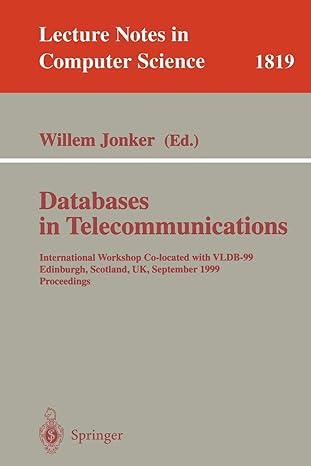Question
The Planck function radiance is B(T) = [ (2hc^2)/(5)][ 1/(e^((hc))/(kb T)) 1 ] in units of J s1 m2 sr1 m1 , where the wavelength
The Planck function radiance is B(T) = [ (2hc^2)/(5)][ 1/(e^((hc))/(kb T)) 1 ] in units of J s1 m2 sr1 m1 , where the wavelength is in meters [m], the temperature T is in Kelvin [K], c = 2.998108m s1 is the speed of light, h = 6.6261034 J s is Plancks constant, and kb = 1.38 1023 J K1 is Boltzmanns constant. In terms of frequency the Planck function radiance is B(T) = [(2h^3)/(c^2)][1/(e^(h/kbT)1] in units of J s1 m2 sr1 Hz1 , where the frequency is in Hertz [Hz]. a) Write a computer program in Python (or some other appropriate data analysis software package) called PlanckFcnWavelength LastnameFirstname.m that computes the Planck function in 0.01 m steps from 0.01 m to 1000.00 m for a temperature of TEarth = 255 K and a temperature TSun = 5917 K. Write all of your results to a file such that the first column contains index values that go from 1 to 100000, the second column contains the 100000 wavelengths in units of meters, the third column contains the 100000 solar radiance values in the units above and the fourth column contains the 100000 terrestrial radiance values in the units above. For columns 2 through 4 make sure your output is in exponential notation with 16 values and 8 decimal points. Call the data file containing these four columns of information PlanckFcnWavelength EarthSun data. Make a single plot with two curves, one curve of the solar radiance versus wavelength and the other of the terrestrial radiance versus wavelength. b) Write a computer program called PlanckFcnFrequency LastnameFirstname.m that first converts 0.01 m and 1000.00 m to frequency in Hertz [or Hz] and then produces a data file called PlanckFcnFrequency EarthSun data with 100000 equally spaced values in frequency that contains information equivalent to that in PlanckFcnWavelength EarthSun data but in terms of frequency rather than wavelength. Again, make a single plot with two curves, one curve of the solar radiance versus frequency and the other of the terrestrial radiance versus frequency. c) Write a computer program called PlanckFcnAnalysis LastnameFirstname.m that reads in all of the values in the files PlanckFcnWavelength EarthSun data and PlanckFcnFrequency EarthSun data and uses them to produce numerical estimates of the integral of the Planck Function for a temperature of TSun = 5917 K. Evaluate in PlanckFcnAnalysis LastnameFirstname.m the value of the Stefan-Boltzmann law for a temperature of TSun = 5917 K and compare this value to the two values obtained from the numerical integration. Finally, have your computer program find the wavelength in PlanckFcnWavelength EarthSun data with the maximum value and the frequency in PlanckFcnFrequency EarthSun data with the maximum value. Convert the frequency with the maximum value to wavelength. Should this wavelength be the same as the wavelength with the maximum value in PlanckFcnWavelength EarthSun data? Why or why not?
Step by Step Solution
There are 3 Steps involved in it
Step: 1

Get Instant Access to Expert-Tailored Solutions
See step-by-step solutions with expert insights and AI powered tools for academic success
Step: 2

Step: 3

Ace Your Homework with AI
Get the answers you need in no time with our AI-driven, step-by-step assistance
Get Started


